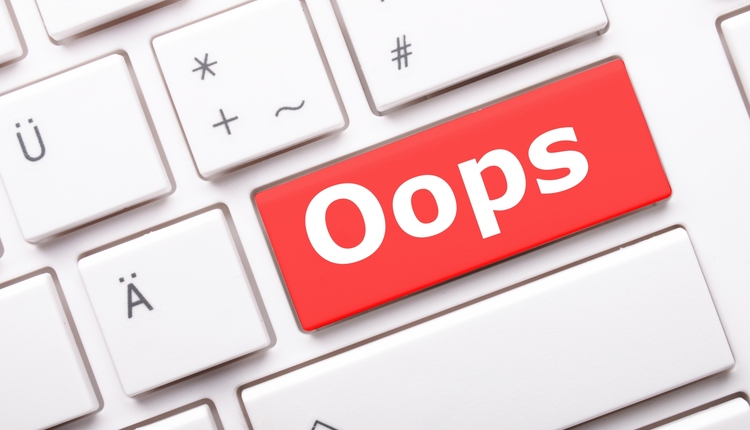
Recently, IKEA came out with its 2015 print catalog. (Yes, print catalogs still exist.) And this year, the global home furnishings superstore went a step further by promoting the catalog via a lighthearted Youtube video that gently spoofs our obsession with all things digital. The video quickly went viral, generating nearly 13 million online views since its release in September.
You may be thinking that print is a dinosaur that will slowly become extinct as digital takes over. My argument is, not necessarily. Recent data released by InfoTrends as part of its Annual State of the Customer Communications Market Survey indicates that the hoped-for paperless delivery adoption rates among businesses have been largely unrealized, with most only seeing incremental adoption growth. InfoTrends has found that in most cases, businesses' expectations for paperless adoption far exceed consumer expectations and behavior. And of consumers who have at some point gone paperless, about one-third has reverted back to paper at least once-most often due to a desire for the hard-copy document or because they had missed a payment.
The truth is, print and digital are not in a competition; they're complementary. You're going to need them both. And your up-and-coming customers are going to require more creative communication than ever before.
Let's take a look at your future customers. Generation Y, also known as the Millennials, is between the ages of 18 and 34 years old. This generation - more than 82 million strong - grew up with a booming economy but experienced the recession of 2008 and recall 9/11 as if it was yesterday. Generation Z, also known as the Creators, is younger than 18 years old and a demographic in its own right, with 78+ million members. "[The Creators] are part of a population who grew up during the aftermath of 9/11, where terrorism is part of the landscape, a sour economy is all they know and uncertainty defines their mindsets," Tim Elmore notes in The Huffington Post. These two groups combined make up just over 50 percent of the U.S. population.
Why should you target them now? For starters, according to this Slideshare presentation by Sparks & Honey, the current buying power of Gen Z alone totals $44 billion, and these young people receive approximately $16.90 per week in allowance on average. They spend their money online at a higher rate than offline, and they use social media as a research tool.
Just as generations change, so do technology and communication preferences. Here are some ways you can address both current and evolving consumer preferences in your customer communications:
1. Utilize more than one channel. Omni-channel. Multi-channel. Whatever buzzword you want to use here, the concept is simple: To get the best response rate, you need to send the communication out via more than one channel - preferably 4 or 5 channels to be effective. Consider the user experience (UX). That includes print, electronic, mobile and social media. According to Sparks & Honey, Gen Z prefers multi-tasking on five screens and/or devices. Mobile, including text, is a powerful means of communication. Generations Y and Z are attached at the hip to their smartphones. "While Generation Y grew up with computers, Generation Z grew up with touch-screens' and their phones have always been smart,'" says Tim Elmore. Communicating via text is one of the fastest ways to capture their attention. Both of these generations are also socially affluent and influential. Building brand loyalty-even better brand advocacy-through social media is a way to keep them talking about your products to their personal networks. You definitely want them to advocate for your company's brand or service; social media conversations spread like wildfire!
2. Collaborate and crowdsource. TIME Magazine published an article in 2013 entitled "Millennials: The Me Me Me Generation." I propose to flip around the "M" and suggest the "We" mentality. For example, in IKEA's business model, the company and customer collaborate to keep the cost of goods low. Typically, IKEA customers pick up flat packs of furniture parts from their nearest IKEA warehouse and assemble the pieces themselves. But add-on services are available if time (and patience) is not on your side. Retailers haven't cornered the market on this kind of innovation: Some insurance companies offer mobile apps that lets the customer generate a quote and manage parts of the claims process yourself. Mobile banking is revolutionizing the retail banking industry, changing or eliminating the role of the teller. And "Green Button" apps are helping utility customers in some markets manage their energy use.
With crowdsourcing, companies solicit input and ideas to come up with innovative products the customer wants. Some of the best ideas come from thinking outside-the-box. Think of this as an accelerated focus group-and many times it's done through mobile and social media channels.
3. Combine trending technology with printed communications. Gartner's "Hype Cycle for Emerging Technologies, 2014" gives several examples of technology trends (such as Near-Field Communication, augmented reality, and gamification) that could be combined with print to bring transactional and marketing communications to life. QR codes are the key here. By scanning the printed document with a mobile device, your customer has access to enriched content such as videos, or even interactive content such as games, quizzes, and conversations on social media. Not only have you saved on paper and postage by adding content without adding pages, you've expanded the reach of your digital marketing initiatives!
4. Demonstrate social responsibility. Generations Y and Z are actively engaged in making the world a better place. Show them how your organization "does good" through community outreach both locally and around the world. Inspire them to rally behind your cause and collaborate with you by sponsoring charitable events. Use your social media presence and transactional communications to promote events and to update customers on how you, and they, are making a difference together.
5. Offer repeat incentives. The back cover of the IKEA catalog provides an offer when it is scanned with a mobile device. Not only that; the same code offers new deals all the time. It reads, "Scan this page with your mobile device regularly to get more offers from IKEA." This gives customers an incentive to keep coming back for more offersand that translates to deeper brand engagement and more revenue. You could do something similar on a telecom bill, for instance, offering new bundle and channel promotions - or even on a financial services statement, providing new educational content and cross-selling services.
How could some of these concepts fit with your business model? Consider it now. With 160+ million Generation Y and Z members at large, the future is right around the corner - and in some cases already at the door.
Mandi McCoy is Senior Product Manager for postal products at DST Customer Communications.
You may be thinking that print is a dinosaur that will slowly become extinct as digital takes over. My argument is, not necessarily. Recent data released by InfoTrends as part of its Annual State of the Customer Communications Market Survey indicates that the hoped-for paperless delivery adoption rates among businesses have been largely unrealized, with most only seeing incremental adoption growth. InfoTrends has found that in most cases, businesses' expectations for paperless adoption far exceed consumer expectations and behavior. And of consumers who have at some point gone paperless, about one-third has reverted back to paper at least once-most often due to a desire for the hard-copy document or because they had missed a payment.
The truth is, print and digital are not in a competition; they're complementary. You're going to need them both. And your up-and-coming customers are going to require more creative communication than ever before.
Let's take a look at your future customers. Generation Y, also known as the Millennials, is between the ages of 18 and 34 years old. This generation - more than 82 million strong - grew up with a booming economy but experienced the recession of 2008 and recall 9/11 as if it was yesterday. Generation Z, also known as the Creators, is younger than 18 years old and a demographic in its own right, with 78+ million members. "[The Creators] are part of a population who grew up during the aftermath of 9/11, where terrorism is part of the landscape, a sour economy is all they know and uncertainty defines their mindsets," Tim Elmore notes in The Huffington Post. These two groups combined make up just over 50 percent of the U.S. population.
Why should you target them now? For starters, according to this Slideshare presentation by Sparks & Honey, the current buying power of Gen Z alone totals $44 billion, and these young people receive approximately $16.90 per week in allowance on average. They spend their money online at a higher rate than offline, and they use social media as a research tool.
Just as generations change, so do technology and communication preferences. Here are some ways you can address both current and evolving consumer preferences in your customer communications:
1. Utilize more than one channel. Omni-channel. Multi-channel. Whatever buzzword you want to use here, the concept is simple: To get the best response rate, you need to send the communication out via more than one channel - preferably 4 or 5 channels to be effective. Consider the user experience (UX). That includes print, electronic, mobile and social media. According to Sparks & Honey, Gen Z prefers multi-tasking on five screens and/or devices. Mobile, including text, is a powerful means of communication. Generations Y and Z are attached at the hip to their smartphones. "While Generation Y grew up with computers, Generation Z grew up with touch-screens' and their phones have always been smart,'" says Tim Elmore. Communicating via text is one of the fastest ways to capture their attention. Both of these generations are also socially affluent and influential. Building brand loyalty-even better brand advocacy-through social media is a way to keep them talking about your products to their personal networks. You definitely want them to advocate for your company's brand or service; social media conversations spread like wildfire!
2. Collaborate and crowdsource. TIME Magazine published an article in 2013 entitled "Millennials: The Me Me Me Generation." I propose to flip around the "M" and suggest the "We" mentality. For example, in IKEA's business model, the company and customer collaborate to keep the cost of goods low. Typically, IKEA customers pick up flat packs of furniture parts from their nearest IKEA warehouse and assemble the pieces themselves. But add-on services are available if time (and patience) is not on your side. Retailers haven't cornered the market on this kind of innovation: Some insurance companies offer mobile apps that lets the customer generate a quote and manage parts of the claims process yourself. Mobile banking is revolutionizing the retail banking industry, changing or eliminating the role of the teller. And "Green Button" apps are helping utility customers in some markets manage their energy use.
With crowdsourcing, companies solicit input and ideas to come up with innovative products the customer wants. Some of the best ideas come from thinking outside-the-box. Think of this as an accelerated focus group-and many times it's done through mobile and social media channels.
3. Combine trending technology with printed communications. Gartner's "Hype Cycle for Emerging Technologies, 2014" gives several examples of technology trends (such as Near-Field Communication, augmented reality, and gamification) that could be combined with print to bring transactional and marketing communications to life. QR codes are the key here. By scanning the printed document with a mobile device, your customer has access to enriched content such as videos, or even interactive content such as games, quizzes, and conversations on social media. Not only have you saved on paper and postage by adding content without adding pages, you've expanded the reach of your digital marketing initiatives!
4. Demonstrate social responsibility. Generations Y and Z are actively engaged in making the world a better place. Show them how your organization "does good" through community outreach both locally and around the world. Inspire them to rally behind your cause and collaborate with you by sponsoring charitable events. Use your social media presence and transactional communications to promote events and to update customers on how you, and they, are making a difference together.
5. Offer repeat incentives. The back cover of the IKEA catalog provides an offer when it is scanned with a mobile device. Not only that; the same code offers new deals all the time. It reads, "Scan this page with your mobile device regularly to get more offers from IKEA." This gives customers an incentive to keep coming back for more offersand that translates to deeper brand engagement and more revenue. You could do something similar on a telecom bill, for instance, offering new bundle and channel promotions - or even on a financial services statement, providing new educational content and cross-selling services.
How could some of these concepts fit with your business model? Consider it now. With 160+ million Generation Y and Z members at large, the future is right around the corner - and in some cases already at the door.
Mandi McCoy is Senior Product Manager for postal products at DST Customer Communications.









